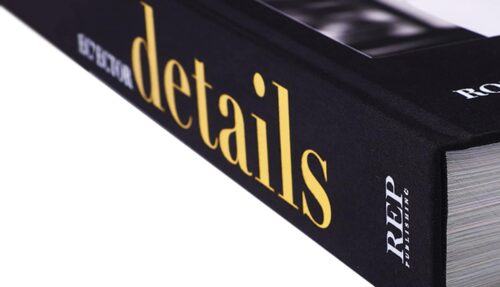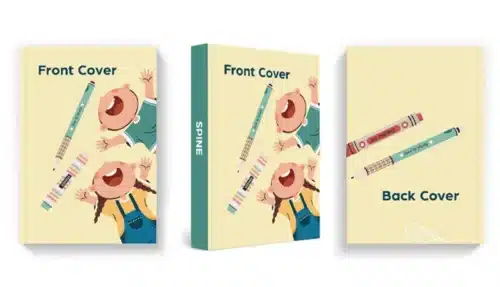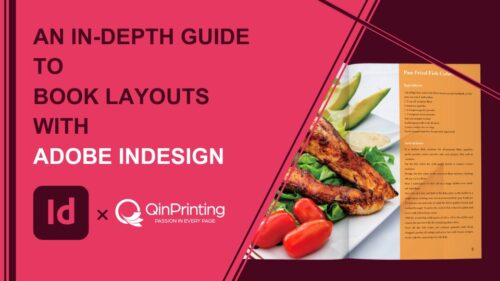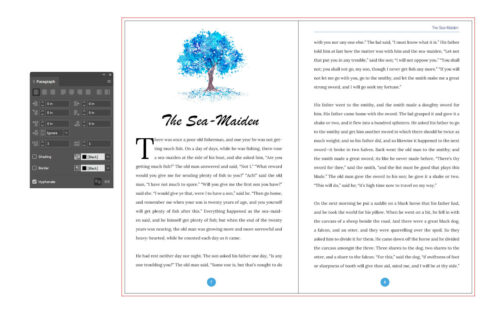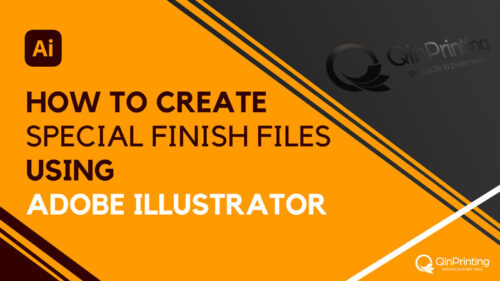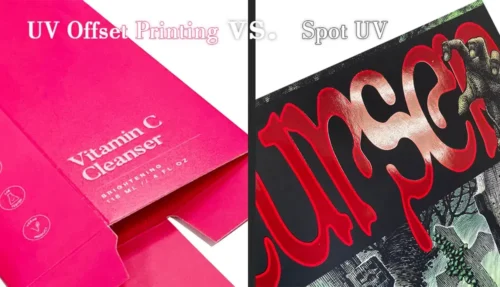We help you decide between the two most popular book binding styles to make sure you make the right choice for your printed book project.
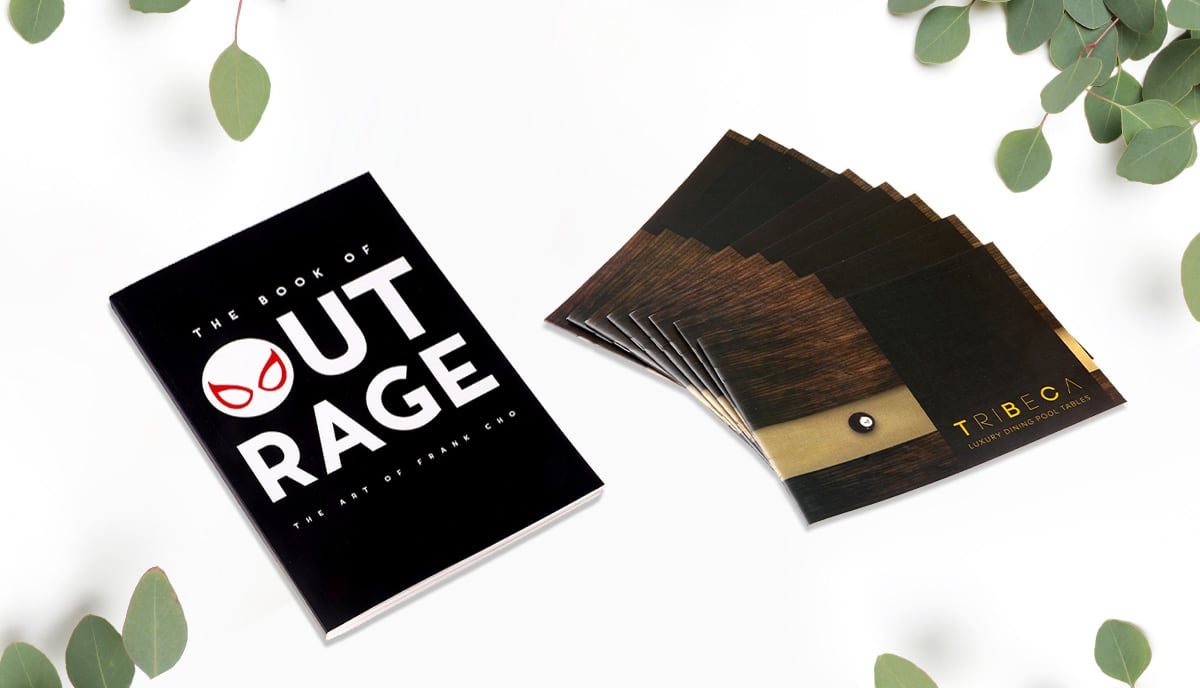
Image: Books Printed by QinPrinting
Choosing between these two most popular styles of bookbinding can be a tough decision. In this post, we explain the differences and similarities between them and how to choose which binding option will best suit your project.
Some print projects suggest obvious binding solutions based on the market norms and on reader expectations. For example, a genre fiction novel you will almost certainly use perfect binding or a hardcover. But what about other print projects for which there is no obvious standard? Should your children’s picture book be saddle-stitched or perfect bound? What about your company’s year-end report? Would your product’s user manual be best as a saddle-stitched brochure or a slim paperback? These are the questions you will answer with ease by the time you finish reading this post.
What is perfect binding?
Perfect binding is one of the most common techniques. It’s also known as paperback, softback, or softcover binding. If you’ve ever picked up a trade paperback novel from the newsstand, the rail station, or the bookstore, you have seen this kind of binding. To bind a book in this way, we collate all the interior pages into a block. Next, we glue the pages together down one side and then glue them into the spine area of the cover sheet, which is made of thicker cover paper and wraps over the block. Last, we cut the cover and the block on the three sides, which are not the spine, which gives the book its “perfect” binding in which the cover and the pages are completely flush.
What is saddle stitching?
Saddle stitching is a very different binding technique. Once the sheets are printed, we fold them and stack them inside each other, usually wrapped in a thicker, often glossy, cover sheet, before stapling all the pages together down the central crease. This is an economical and effective form of binding, but only works when the page count is a multiple of four and no more than 48 pages. In principle, it would be possible to saddle stitch up to 64 pages but the resulting book does not close well and some pages may stick out further than others. It’s called “saddle stitching” because the original technique meant sewing the pages together with a special binding thread. We can still do this, but these days it’s cheaper and simpler and just as effective to staple them.
How to choose between perfect bound and saddle stitch
So, now you know the basics of what’s involved in each binding style. Let’s have a look at how you can choose between them for your specific print project. There are two key factors you will need to consider when making your decision. These are your book’s page count and your budget. In most cases, saddle stitching is cheaper but if you have a higher page count, perfect binding may be your best option. Likewise, you may choose to perfect bind a book with fewer than 50 pages, in which case you may need to choose a thicker paper stock to reach the required minimum 3 mm spine width for perfect binding to work.
How many pages does your book have?
As we’ve said, saddle stitching has a theoretical upper page limit of 64 but a practical limit of 48 pages. You can perfect bind hundreds of pages with no difficulty. The minimum page requirement for perfect binding in most cases is about 28 pages. Much depends also on the thickness of the paper (which we measure in terms of its weight) and the overall dimensions of the book. But the guiding principle is that anything you need to print over about 30 pages would be better perfect bound and anything under that suggests saddle stitching is the best option.
How much money do you have to spend?
Your budget is a very important factor in helping you decide between perfect binding vs saddle stitch. Saddle stitch looks good and is fine for brochures, instruction manuals, children’s picture books, and other publications with few pages. But perfect binding has a more professional look if that matters to your readers. The bottom line, however, is that saddle stitching is usually cheaper and perfect binding costs more. So, you’ll need to calculate how many copies you need and how much they will cost when bound one way or the other and balance that against your reader’s expectations, the kind of look and feel you’re aiming for, and the cost of mailing out or distributing final copies.
Examples of books which are most commonly perfect bound or saddle stitched
To further help you make your decision, let’s look at the sort of books that we most commonly use perfect binding for when printing projects for clients, and also the books for which saddle stitching is the most popular solution.
Typical perfect bound projects:
- novels
- children’s chapter books
- non-fiction books
- textbooks
- the longer business reports
- catalogs
- high-end brochures
Typical saddle stitch projects:
- short brochures
- low page count seasonal catalogs
- comic books
- magazines
- instruction manuals
- tourist guides
- shorter poetry collections
Of course, so long as your project doesn’t exceed the minimum or maximum page count for each binding style, then you can print any of the above with either technique. In the end, it’s a personal choice. But it’s worth giving some thought to the principles that we’ve outlined here and considering the solutions which others have found to be most viable for projects similar to your own.
Customizing your print project
Whatever your printing needs, here at QinPrinting, we are happy to fully customize your products in terms of size, orientation, materials, and more. Many digital printers offer only a limited range of options. Often, the choices available are enough to meet basic printing needs. But that changes when you have a more specific project in mind or you need to print large numbers of copies or the results must be of the highest professional quality. In that case, you will need a reputable offset printer with a comprehensive set of solutions and the technical and practical possibility of customizing everything to your specific requirements.
Talk to us!
We hope this short guide has been helpful and that you now feel confident to choose between perfect binding vs. saddle stitch for your print projects. But we know that sometimes it’s not as simple as that. Our best advice is always to pick up the phone, shoot us an email, call us on Skype, or get in touch via our handy online contact form. We won’t charge you to chat through your ideas or for advice about the best solutions for your needs. When you contact us, you’ll speak to a qualified expert printing professional, not a robot or an exhausted call center operator who doesn’t know what they’re talking about!
At QinPrinting, we have over 25 years’ experience in the industry, state-of-the-art technology at our fingertips, a knowledgeable and enthusiastic team, and a genuine commitment to individualized customer service. Whether you’re a business, non-profit, a club or association, school or health service clinic, self-published author or an independent creative of any stripe, we have the knowledge, skills, technology, and willingness to make sure your print project turns out perfectly every time. We also understand the importance of working within your budget and doing everything possible to guarantee a good return on your investment. So, let’s talk. We can’t wait to hear from you.






